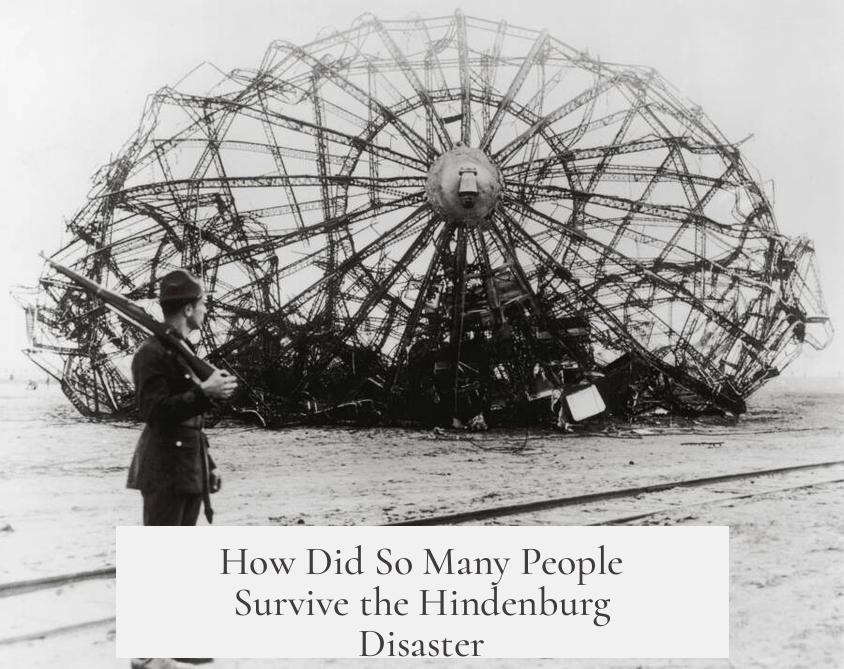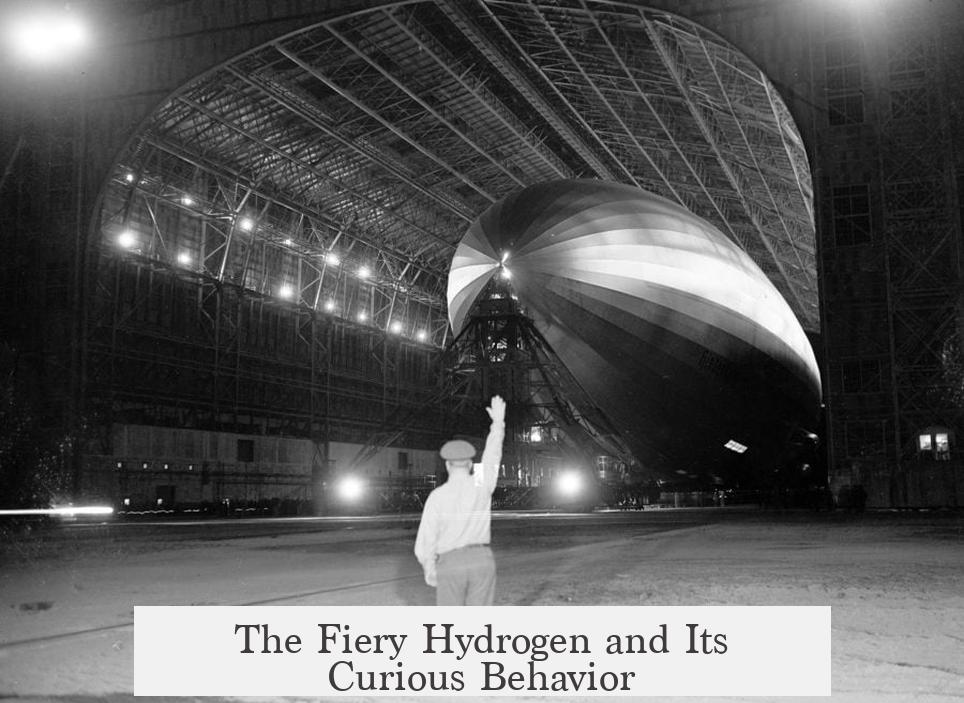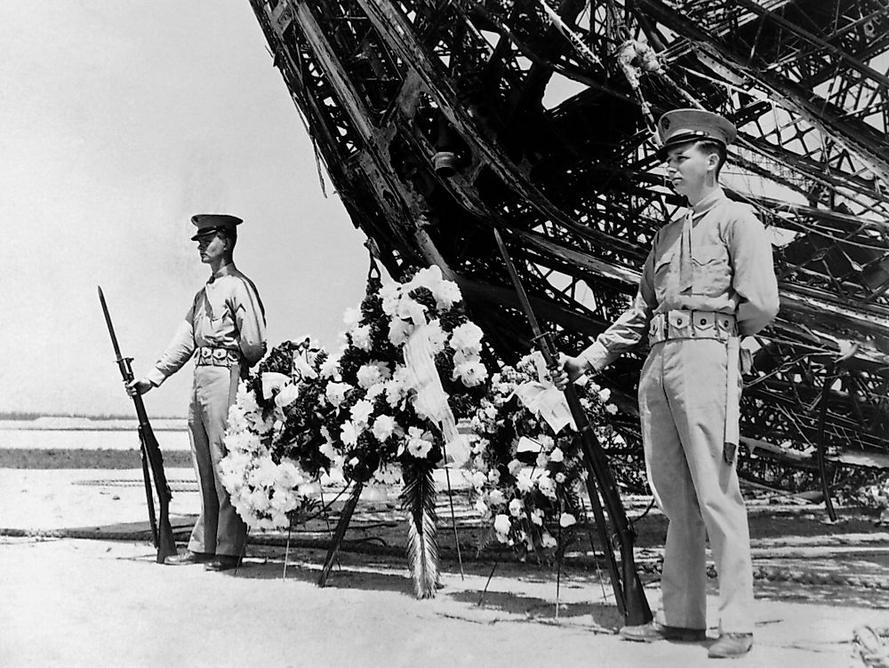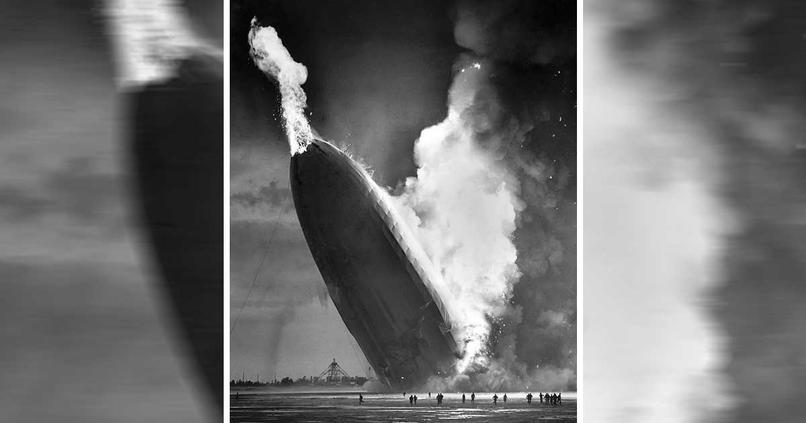Many people survived the Hindenburg disaster due to a combination of factors including the airship’s low altitude at ignition, the nature of the fire, rapid emergency response, and crew preparedness. The disaster occurred during landing, which limited the fall height and allowed a more controlled descent, giving passengers a critical chance to escape.
When the Hindenburg caught fire, it was close to the ground, about to land. This proximity greatly reduced the severity of the fall. Instead of plummeting straight down, the craft descended relatively gently. Not all hydrogen ignited at once, which maintained partial buoyancy. This slow descent allowed many passengers and crew to jump from the airship before it hit the ground. Survivors were mostly near the bottom windows, which offered quick exits. Those located higher or inside suffered more severe consequences due to height and lack of escape paths.
According to the official German report, roughly 30 seconds passed from the initial fire to the crash landing. This window was vital, giving people time to react and evacuate. The gentle descent prevented a sudden and deadly fall, contributing to the survival of many onboard.
The fire itself was driven by burning hydrogen, a very light gas that rises rapidly when ignited. As hydrogen burned, the flame lifted upward, sparing most people at the bottom of the airship from direct exposure. This unusual flame behavior is a key reason why many escaped direct burns. Instead, most burn injuries resulted from falling debris and diesel fuel raining down on survivors.
Emergency response played a crucial role. The disaster unfolded at the landing site, where Navy ground crew were already present to assist. These personnel helped survivors clear the area and prevented further injuries from wreckage. Additionally, a nearby road made it easier to get injured people to hospitals quickly. Had the accident occurred in less accessible terrain, survival rates likely would have been lower.
The crew’s readiness also improved survival odds. All crew members were awake and stationed at mooring points during the landing, enabling quick reactions to the fire. Their alertness allowed orderly evacuation efforts and increased the chance for people to escape.
| Factor | Impact on Survival |
|---|---|
| Low altitude burning & gentle descent | Reduced fall height, time to escape, many passengers jumped to safety |
| Burning hydrogen flame behavior | Flame rose upward, sparing bottom passengers from direct burns |
| Emergency response at landing site | Rapid aid and evacuation, preventing further casualties |
| Crew alertness during landing | Improved evacuation and safety measures |
The Hindenburg disaster differed from modern air crashes. It involved a slow-speed crash followed by a brief, intense fire fueled by a lighter-than-air gas. Once the gas bags ruptured, the fire quickly dissipated. This contrasts with today’s high-impact plane crashes. Video footage can seem more dramatic than reality due to exposure and unfamiliarity with airship operations at the time.
The survivors’ locations, the nature of the fire, and prompt help combined to dramatically reduce the death toll. While the disaster is well known for its tragic loss of life, over 60 people survived the event. The combination of physical and situational factors explains this unusual survival rate.
- The airship was near the ground during ignition, allowing limited fall height and controlled descent.
- Hydrogen flames rose upward, sparing many passengers near the bottom from the fire.
- Navy ground crew and proximity to a road enabled fast rescue and medical aid.
- Alert and prepared crew facilitated quicker evacuation.
How Did So Many People Survive the Hindenburg Disaster?

Despite the terrifying fire that consumed the Hindenburg in 1937, a remarkable number of passengers and crew survived. How is that possible? The answer lies in a mix of fortunate circumstances, physical factors, and quick human reactions that turned a potential massacre into a tragic yet partly survivable event.
The Hindenburg disaster is one of aviation history’s most shocking moments. The massive German passenger airship burst into flames while preparing to land. Yet, quite a few people lived through it. Let’s unpack how that happened step-by-step.
Landing Low and Sliding Down Gently

The key initial factor is the altitude—or rather, the lack of it. The Hindenburg was very close to the ground, just about to finish its landing. This low altitude dramatically improved survival odds.
More surprisingly, the airship didn’t plummet like a rock. Instead, it fell relatively gently. Why? Because not all the hydrogen exploded simultaneously. Some hydrogen bags still held their gas, slowing the descent for critical seconds.
“Not all of the hydrogen ignited at once, maintaining some buoyancy for critical seconds, lowering the craft a bit more slowly than freefall. This allowed many of the passengers and crew to jump to the ground.”
This meant people could leap from the ship before hitting the ground or the flames. Sure, many suffered injuries from the fall, but they escaped the fire itself, which caused far worse harm.
Let’s not forget location inside the ship. Survivors mostly sat near the bottom decks, close to windows to escape rapidly. Meanwhile, those deep inside or on upper levels faced tragic odds:
“Most of the crew located in the inner portions of the craft died as they were too high up to survive the fall at the point when ignition occurred or unable to get out quickly enough.”
Imagine having a handy exit just a jump away during chaos. That’s exactly what saved many lives. According to official estimates, about 30 seconds elapsed between the fire’s start and first ground impact—a narrow window to move fast!
The Fiery Hydrogen and Its Curious Behavior

The fire’s nature also worked in survivors’ favor. Hydrogen, the lifting gas inside the airship, is extremely light. When it caught fire, it rose swiftly upward rather than engulfing everything below.
“Hydrogen is extremely low density, especially as it heated up from combustion… This rising flame protected most passengers and crew along the bottom from direct burns due to the fire.”
Most burn injuries actually weren’t from direct flame contact. Instead, burning debris and diesel fuel rained down on people. So the intense heat was mostly overhead, creating an escape zone nearer to the ground.
Therefore, passengers near the bottom decks found themselves shielded somewhat by the natural physics of the flaming hydrogen rise.
Perfect Place, Perfect Response

Where the disaster occurred significantly influenced survival rates. It took place right at the landing site, not mid-flight or over inaccessible terrain. This allowed ground crews to spring into action immediately.
“There were numerous Navy ground crew in place to secure the Hindenburg who were able to rush in and help survivors clear the area before burning wreckage crushed them as well as providing emergency medical aid.”
Also crucially, a nearby road allowed quick evacuation to hospitals. Had the airship crashed in dense New Jersey forests or swamps, rescue efforts would have been painfully slow. Quick transport to medical facilities made a huge difference for burn victims and injured survivors.
Ready Crew and a Different Kind of Crash

Another aspect often overlooked is that the crew was awake and alert during landing. Everyone was positioned at mooring stations, which contributed to quick reactions when trouble started.
“The entire crew was at mooring stations at the time and this doubtless reduced the death toll, because everybody was awake and alert during a potentially dangerous evolution.”
The crash itself was unusual too. Rather than a catastrophic high-speed crash, the Hindenburg’s fall was controlled by remaining buoyancy and ended in a short but intense fire. This contrasts sharply with modern plane crashes, where impact forces often cause massive fatalities instantly.
Finally, historic footage sometimes misleads modern viewers. Camera exposure and unfamiliarity with airship operation make the disaster seem even more hellish than it was. The official death toll was 36 out of 97 onboard—a tragedy, yes, but also a survival story.
Wrapping Up: Why So Many Survived
- Close to the ground: The near-ground ignition meant short fall distances.
- Gentle decent: Hydrogen’s partial burning slowed the drop, letting people jump.
- Hydrogen flame behavior: Rising flames protected those near the bottom decks.
- Effective location: Ground crews and road access enabled rapid rescue.
- Alert crew: Awake and stationed during landing, able to respond quickly.
In sum, surviving the Hindenburg disaster came down to fortuity married with physics and human action. It’s a reminder that even dire crashes sometimes allow chance and quick decisions to save lives.
Curious about deeper details? You’ll find rich sources like the official German report here. Even footage and audio from the day add vivid context.
Next time you see the fiery photos or hear the eerie broadcast, remember this: behind the tragedy is a complex story of survival against the odds.




